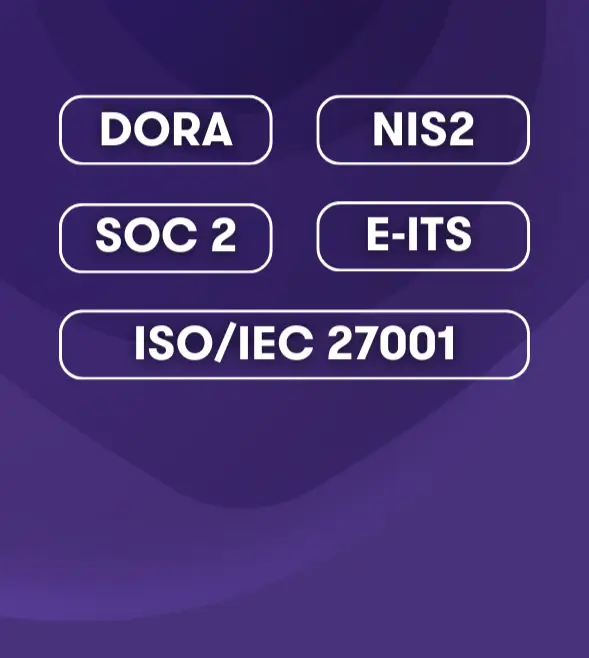-
Other audit services
We help clients with the application and use of foreign financial aid of EU and other funds and help prepare financial reports.
-
Audit calculator
The calculator will answer if the company's sales revenue, assets or number of employees exceed the limit of an inspection or audit.
-
Payroll and related services
We perform payroll accounting for companies whether they employ a few or hundreds of employees.
-
Tax accounting
Grant Thornton Baltic's experienced tax specialists support accountants and offer reasonable and practical solutions.
-
Reporting
We prepare annual reports in a timely manner. We help to prepare management reports and various mandatory reports.
-
Consolidation of financial statements
Our experienced accountants and advisors help you prepare consolidation tables and make the consolidation process more efficient.
-
Consultancy and temporary staff
Our experienced specialists advise on more complex accounting transactions, rectify poor historic accounting, and offer the temporary replacement of an accountant.
-
Outsourced CFO service
Our CFO service is suitable for companies of all sizes and in all industries. We offer services to our clients in the required amount and competences.
-
Assessment of accounting processes
We help companies to implement accounting practices that are in compliance with local and international standards.
-
Accounting services for small businesses
We offer affordable service for small businesses. We help organize processes as smartly and cost-effectively as possible.
-
Cryptocurrency accounting
We keep up with blockchain technology to serve and advise crypto companies. We are supported by a network of colleagues in 130 countries.
-
Trainings and seminars
Our accountants have experience in all matters related to accounting and reporting. We offer our clients professional training according to their needs.

-
Business advisory
We offer legal support to both start-ups and expanding companies, making sure that all legal steps are well thought out in detail.
-
Fintech advisory
Our specialists advise payment institutions, virtual currency service providers and financial institutions.
-
Corporate advisory
We advise on legal, tax and financial matters necessary for better management of the company's legal or organizational structure.
-
Transaction advisory
We provide advice in all aspects of the transaction process.
-
Legal due diligence
We thoroughly analyze the internal documents, legal relations, and business compliance of the company to be merged or acquired.
-
In-house lawyer service
The service is intended for entrepreneurs who are looking for a reliable partner to solve the company's day-to-day legal issues.
-
The contact person service
We offer a contact person service to Estonian companies with a board located abroad.
-
Training
We organize both public trainings and tailor made trainings ordered by clients on current legal and tax issues.
-
Whistleblower channel
At Grant Thornton Baltic, we believe that a well-designed and effective reporting channel is an efficient way of achieving trustworthiness.

-
Business model or strategy renewal
In order to be successful, every company, regardless of the size of the organization, must have a clear strategy, ie know where the whole team is heading.
-
Marketing and brand strategy; creation and updating of the client management system
We support you in updating your marketing and brand strategy and customer management system, so that you can adapt in this time of rapid changes.
-
Coaching and development support
A good organizational culture is like a trump card for a company. We guide you how to collect trump cards!
-
Digital services
Today, the question is not whether to digitize, but how to do it. We help you develop and implement smart digital solutions.
-
Sales organisation development
Our mission is to improve our customers' business results by choosing the right focuses and providing a clear and systematic path to a solution.
-
Business plan development
A good business plan is a guide and management tool for an entrepreneur, a source of information for financial institutions and potential investors to make financial decisions.
-
Due diligence
We perform due diligence so that investors can get a thorough overview of the company before the planned purchase transaction.
-
Mergers and acquisitions
We provide advice in all aspects of the transaction process.
-
Valuation services
We estimate the company's market value, asset value and other asset groups based on internationally accepted methodology.
-
Forensic expert services
Our experienced, nationally recognized forensic experts provide assessments in the economic and financial field.
-
Business plans and financial forecasts
The lack of planning and control of cash resources is the reason often given for the failure of many businesses. We help you prepare proper forecasts to reduce business risks.
-
Outsourced CFO service
Our CFO service is suitable for companies of all sizes and in all industries. We offer services to our clients in the required amount and competences.
-
Reorganization
Our experienced reorganizers offer ways to overcome the company's economic difficulties and restore liquidity in order to manage sustainably in the future.
-
Restructuring and reorganisation
We offer individual complete solutions for reorganizing the structure of companies.
-
Corporate taxation
We advise on all matters related to corporate taxation.
-
Value added tax and other indirect taxes
We have extensive knowledge in the field of VAT, excise duties and customs, both on the national and international level.
-
International taxation
We advise on foreign tax systems and international tax regulations, including the requirements of cross-border reporting.
-
Transfer pricing
We help plan and document all aspects of a company's transfer pricing strategy.
-
Taxation of transactions
We plan the tax consequences of a company's acquisition, transfer, refinancing, restructuring, and listing of bonds or shares.
-
Taxation of employees in cross-border operations
An employee of an Estonian company abroad and an employee of a foreign company in Estonia - we advise on tax rules.
-
Tax risk audit
We perform a risk audit that helps diagnose and limit tax risks and optimize tax obligations.
-
Representing the client in Tax Board
We prevent tax problems and ensure smooth communication with the Tax and Customs Board.
-
Taxation of private individuals
We advise individuals on personal income taxation issues and, represent the client in communication with the Tax and Customs Board.
-
Pan-Baltic tax system comparison
Our tax specialists have prepared a comparison of the tax systems of the Baltic countries regarding the taxation of companies and individuals.
-
Internal audit
We assist you in performing the internal audit function, performing internal audits and advisory work, evaluating governance, and conducting training.
-
Internal Audit in the Financial Services Sector
We provide internal audit services to financial sector companies. We can support the creation of an internal audit function already when applying for a sectoral activity license.
-
Audit of projects
We conduct audits of projects that have received European Union funds, state aid, foreign aid, or other grants.
-
Prevention of money laundering
We help to prepare a money laundering risk assessment and efficient anti-money laundering procedures, conduct internal audits and training.
-
Risk assessment and risk management
We advise you on conducting a risk assessment and setting up a risk management system.
-
Custom tasks
At the request of the client, we perform audits, inspections and analyzes with a specific purpose and scope.
-
External Quality Assessment of the Internal Audit Activity
We conduct an external evaluation of the quality of the internal audit or provide independent assurance on the self-assessment.
-
Whistleblowing and reporting misconduct
We can help build the whistleblowing system, from implementation, internal repairs and staff training to the creation of a reporting channel and case management.
-
Information security management
We provide you with an information security management service that will optimise resources, give you an overview of the security situation and ensure compliance with the legislation and standards.
-
Information security roadmap
We analyse your organisation to understand which standards or regulations apply to your activities, identify any gaps and make proposals to fix them.
-
Internal audit of information security
Our specialists help detect and correct information security deficiencies by verifying an organization's compliance with legislation and standards.
-
Third party management
Our specialists help reduce the risks associated with using services provided by third parties.
-
Information security training
We offer various training and awareness building programmes to ensure that all parties are well aware of the information security requirements, their responsibilities when choosing a service provider and their potential risks.
-
Digital Operational Resilience Act (DORA)
We will help you create a DORA implementation model that meets your company's needs and ensures that you meet the January 2025 deadline.

-
ESG advisory
We help solve issues related to the environment, social capital, employees, business model and good management practices.
-
ESG audit
Our auditors review and certify sustainability reports in line with international standards.
-
Sustainable investments
We help investors conduct analysis of companies they’re interested in, examining environmental topics, corporate social responsibility and good governance practices.
-
Sustainable tax behaviour
Our international taxation specialists define the concept of sustainable tax behaviour and offer services for sustainable tax practices.
-
ESG manager service
Your company doesn’t necessarily need an in-house ESG manager. This role can also be outsourced as a service.

-
Recruitment services – personnel search
We help fill positions in your company with competent and dedicated employees who help realize the company's strategic goals.
-
Recruitment support services
Support services help to determine whether the candidates match the company's expectations. The most used support services are candidate testing and evaluation.
-
Implementation of human resource management processes
We either assume a full control of the launch of processes related to HR management, or we are a supportive advisory partner for the HR manager.
-
Audit of HR management processes
We map the HR management processes and provide an overview of how to assess the health of the organization from the HR management perspective.
-
HR Documentation and Operating Model Advisory Services work
We support companies in setting up HR documentation and operational processes with a necessary quality.
-
Employee Surveys
We help to carry out goal-oriented and high-quality employee surveys. We analyse the results, make reports, and draw conclusions.
-
HR Management outsourcing
We offer both temporary and permanent/long-term HR manager services to companies.

-
Digital strategy
We help assess the digital maturity of your organization, create a strategy that matches your needs and capabilities, and develop key metrics.
-
Intelligent automation
We aid you in determining your business’ needs and opportunities, as well as model the business processes to provide the best user experience and efficiency.
-
Business Intelligence
Our team of experienced business analysts will help you get a grip on your data by mapping and structuring all the data available.
-
Cybersecurity
A proactive cyber strategy delivers you peace of mind, allowing you to focus on realising your company’s growth potential.
-
Innovation as a Service
On average, one in four projects fails and one in two needs changes. We help manage the innovation of your company's digital solutions!

Estonia is the first country in the world to establish a digital ID system where any foreign national can apply for an electronic identity in Estonia. This is a unique solution anywhere in the world and will allow foreigners to use many of Estonia’s e-services anywhere in the world.
On 1 December 2014, amendments to the Identity Documents Act and the State Fees Act entered into force, on the basis of which the digital e-residency cards are issued to all persons who have ties to Estonia or a justified interest in using Estonian e-services.
The purpose of issuing a digital identity document to e-residents is to promote the development of the Estonian economy, research, education and culture, creating the opportunity to use e-services with an Estonian digital document.
Estonian citizens and aliens who have an Estonian residence permit or registered right to reside in Estonia have been able with the Estonian ID card to use various e-services for more than 12 years. The ID card is a chip card with a photo. It serves as an identity document and is obligatory for all Estonian citizens at least 15 years of age. The opportunity to use e-services is guaranteed for all citizens as well as for foreigners who live in Estonia on the basis of a residence permit or registered right to reside in the country.
As of December 2014, there are over 1.2 million active ID cards in use (the Estonian population as of 1 January 2014 was 1.3 million) and today around 190 million digital signatures have been given using the ID card, and ID cards have been used over 300 million times for authentication of identity. Besides digital signing of documents and electronic identification for use of government services and online banking, ID cards can be used to encrypt documents or e-voting.
What is it?
The e-resident’s digital ID is an identity document in digital form that is being issued to foreign citizens by the Estonian state on the basis of an identification document of the country of citizenship.
The e-resident’s digital ID is a chip card analogous to the national ID card, and can be used to authenticate identity and sign digitally in digital environments. The document does not bear a photograph of the cardholder and cannot be used as a visual identity document or travel document.
Who is it for?
All foreign nationals who lack an Estonian residence permit but have an interest in investing in Estonia or some other connection to Estonia can apply for a digital ID starting 1 December 2014. The main beneficiaries will be people who have ties to Estonia through investing or business or they have a need to be active in Estonia.
Thus the main target groups are foreign investors and foreign staff of such companies, foreign nationals who sit on management bodies or have a holding in local firms and foreign specialists and staff, foreign clients and partners of Estonian companies. In addition, foreign researchers, faculty and students, representative of other countries and international organisations in Estonia and people of Estonian ethnicity living abroad and their descendants.
Companies with foreign holdings have a noteworthy economic influence on Estonia, being dominant in Estonian export (59% of total exports), and they also have an important role to play in the Estonian economy, with 36% of employment, 34% of R&D spending, and 44% of the economy’s value-added. [1]
Why?
The digital ID can be used in an electronic environment to authenticate identity. It will allow access to many Estonian public e-services such as digital signing, company registration portal, the electronic tax authority, and the state portal eesti.ee.
Digital signing replaces physical signatures on paper and all Estonian governmental authorities accept documents signed in this way; it is also in widespread use in business, including at banks.
The company registration portal allows companies to be set up and all procedures for managing a company to be conducted (including changing company address, business name, management board members, company capital, articles of association etc.).
Tax returns can be filed through the electronic tax authority, it is also a channel for communicating with the tax authority, and filing refund claims.
Thus the digital ID meant for non-residents is yet another argument for investing in Estonia, alongside the tax exemption on retained earnings. To this point, foreigners have found it complicated to participate in managing Estonian companies. The e-resident’s digital ID provides the needed flexibility. Now it is possible in a single day to start a company and open a bank account, and manage assets through an online bank from afar.
How?
To obtain the e-residency card, i.e. the e-resident’s digital ID, applicants must come to Estonia and apply in person to the Police and Border Guard Board. A state fee of 50 euros must be paid for processing of the application, which will take up to 10 business days. If the application is granted, the Police and Border Guard Board will issue the identity card and PIN codes that can be used for authentication and digital signature.
When applying for the digital ID for the first time, applicants must contact the Police and Border Guard Board twice for authentication: when submitting the application and upon receiving the document. On subsequent applications for the digital ID, the person need only go to a Police and Border Guard service or Estonian foreign representation once, for authentication of the applicant.
Useful links:
[1]Source: Estonia – the business paradise, Technopolis Group, 2013 (2010 data)
Author: Eneli Perolainen




